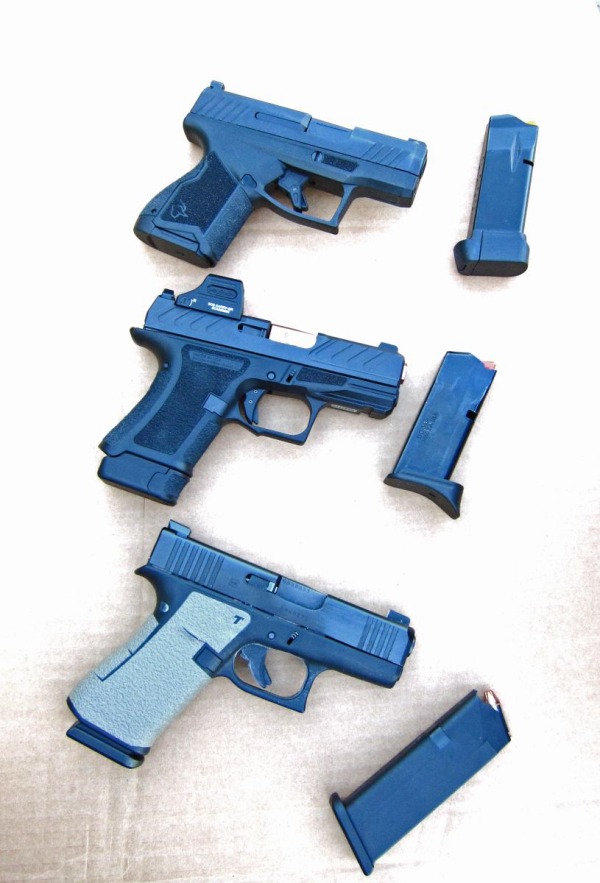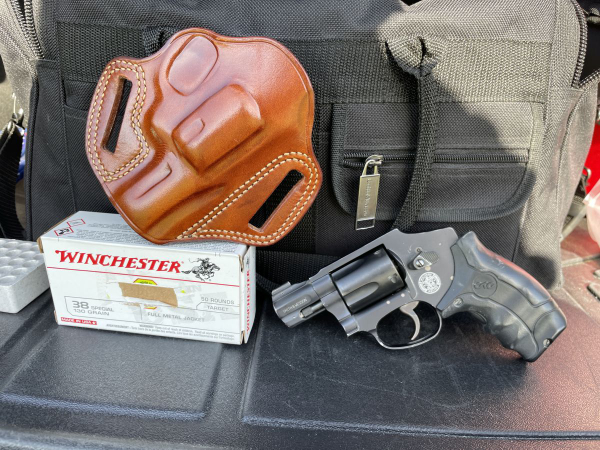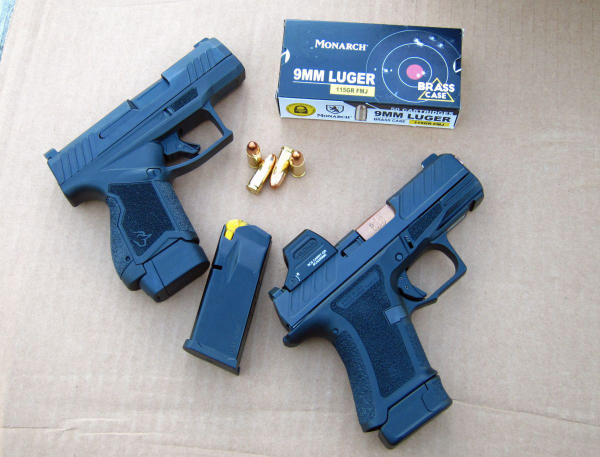
The question was long ago raised, “what good is a short revolver?” There’s no such thing as a stupid question, but that one gets perilously close. Now the era of the “micro-compact” auto has generated a line of products blurring the line between “truly tiny,” “kinda’ small,” and “that’s big to be ‘micro.”
Things like this cause us to wonder what the world has come to.
If you want to understand the need for – and best use of – the snub revolver, get the best book on the subject, available on backorder from Snub Noir – Ed Lovette’s The Snubby Revolver, 3rd Edition. Using some of his criteria, I examined the “snub auto” as currently made and broadly available.
First, it’s the gun you have when you’re not “armed.” It’s the least you can have and still be able to fight. The revolver meets that need due to (1) small overall envelope, (2) relatively light weight, and (3) respectable amount of power.

Consider the size-distribution of the snub: the revolver has thickness due to a revolving cylinder, but the length fore-and-aft and height top-to-bottom combine for a small form factor allowing it to be easily hidden in a wide range of locations on one’s person.
The weight extends from “I got cheated, there’s no steel here” to “I need a better belt to hold this steel up.” That’s a “good news, bad news” situation: too light, it’s miserable to shoot – and that means you won’t practice; too heavy, you’ll give in to temptation to leave it at home.
Ask Ed Lovette about that; as an officer in the CIA, he is aware of those on overseas posts who, for convenience, left the gun at home, only to get kidnapped with the ultimate in negative outcomes. The first rule of a gunfight is have a gun.
That’s important.
The snub fits that bill, killing the temptation to go it alone. “That’s not much gun” becomes “this is my life-line.”
Next, the small gun – short and easily hidden – is easily maneuvered in the close quarters of personal combat. The short barrel is not only more quickly drawn than a service-length gun, it gets into tighter places.
One reason I prefer short barrels on handguns – and shotguns and carbines – is that ability to get around to do my work without anything obstructing the path of the muzzle. When the threat is in body-contact distance, the short barrel is king.
And it’s capable of reaching out as far as you can accurately shoot; and further for the accomplished.
A longer gun? Consider a situation where you’ve been knocked down (or just fallen) and the aggressor is literally on your back. Getting the muzzle of that snub around your side or over your shoulder is more likely than with a service-length (4 ½” to 5”) pistol.
And if you do, what about the last of my advantages of the short gun? The gun grab attempt.
As Ed points out, the shorter overall length of the snub revolver means less for the offender to hang on to in that tussle. It’s the same with the short auto. If the stock on the revolver is large – like the Crimson Trace LaserGrips on my S&WM&P340 -- I literally have more to hang onto than the aggressor.
How do the short autos measure up?
The revolver wins in the “pocket carry” department; the closest I’ve been able to comfortably work out in a pocket context is the Taurus GX4, the first one. I have XS Sights on mine, a leather Galco Pocket Holster. With the regular 11-round magazine in place, it’s pocketable, but it’s not in a class handling wise with a snub wheel gun.
Still, you have 11 + 1 with the Taurus and it’s relatively easy to shoot. It’s slower on timed courses of fire, but not critically slow. You won’t win the National Matches or the Bianchi Cup with it, but you can do serious work with the little cannon out to distance.
But that’s not the primary theater of operations of the short(est) guns –

For this excursion into the snubnosed auto, I selected my trusted Taurus GX4 at the low end of cost and the Shadow Systems CR920 at the upper end. The CR920 was hampered with an optic – the Holosun SCS Carry. Fitting so low in the slide, there’s the least amount of mechanical offset – and the gun’s primary focus is close range work. The ammo was Monarch “Brass Case” 115gr FMJ from Academy Sports.
I used B-8 repair centers for “body shots” and nominally 3x5” shipping labels for the ‘head box.’ The label for the CR920 was only 3x4” as it was the first on the roll of labels. That helped make up for the unfairness of the Shadow Systems gun being under glass.
I shot the “Claude Werner High Percentage” standards, five draws to a single hit in the 3x5” in a second or less each; you start from “holstered low ready” (hand on the holstered gun in a firing grip). Make sure to get your other hand out of the way before shooting.
For the B-8, I shot the Florida Dept. of Law Enforcement “stage two” from a few years back. My modification is to make two hits in the repair center in a second or less from a legit low ready. Both of these strings are fired from ten feet.
I only had 2/5 in the head box with the CR920. Fired cold, first shots of the day, I found the height over bore of the dot – plus a good amount of “preignition push” – kept the hits low. With the XS Sights on the Taurus, I had four out of five, they were low-right nicks on the shipping label. One hit was significantly low with the Taurus, no doubt shooter-induced.
The same gun showed three 9’s, two eights and an outside seven on the bull. Using the short magazine prevented the addition of that important small finger to keep the gun in line.

With the CR920, the B-8 had four hits tightly clustered in the low part of the 10-ring below the “X” – mechanical offset – with two hits in the low-left 8-ring.
Again, shooter induced.
And the times were long. These little guns jump – like the snub revolvers do. There’s no pain, but there’s a bucking handgun.
Stepping back to seven yards for working right-hand, left-hand and right-hand only, shooting on the 3x5” label, all hits were in the top of the label with the CR920. The GX4 hit center of the label with one hit and chewed the bottom edge of the label with the other five rounds.
At ten yards, shooting on the B-8 for a single six-round string, the CR920 put all hits in the “10,” with a pair in the high part of the “X.” The GX4 printed two “9s,” 2 in the 10- and two in the “X” rings.
If all you had was one of these short autos, you’d be fine –
As long as you did the practice.
— Rich Grassi